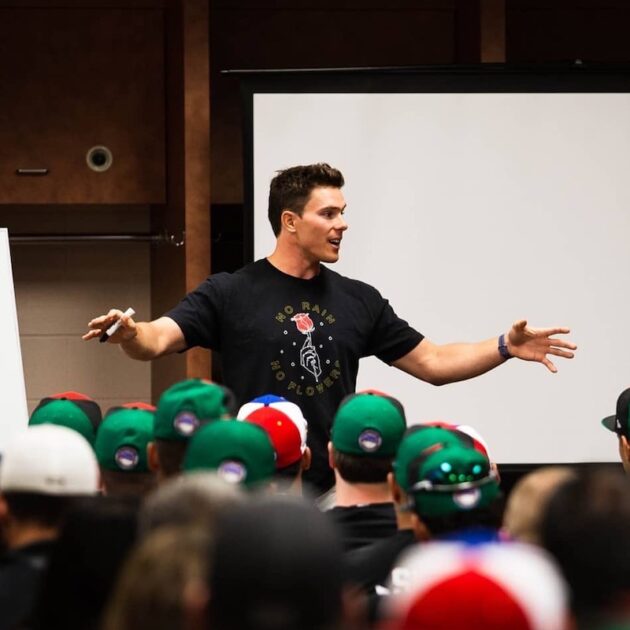What is confidence? You know it when you see it. One TED Talk described self-confidence as a true “belief that you can accomplish any task no matter the adversity or circumstances”. The best part about it being a skill, is it can be trained!
Step 1: Repetition
How do you begin to become confident at something? First, we must familiarize ourselves with the task. The task cannot be new or novel to us. Malcom Gladwell talks about the 10,000-hour rule in his book “Outliers” (I highly recommend checking it out). In order to master something, we must commit to 10,000 hours of focused practice at it. This focused practice takes a task that initially requires a lot of thinking and makes it subconscious.
We want it to be instantaneous. The less clutter in our brains the better. When we do something like swing a bat, throw a ball, or shoot a free throw, it should be as easy as choosing to sit down. The problem with the 10,000 hours is the amount of adversity that is faced. Nothing is handed and everything is earned. There is no cheat code or shortcut to the championship. I must be worked for. Many people quit before the real battle with the mind even begins.
Step 2: Dominant Self-Talk
This is a make or break. We have so many people in our lives that are going to want to tell us we aren’t good enough at something. If the voice in our head begins to doubt us too, who do we have on our side? At the end of the day, if we don’t believe in ourselves then nobody else will.
Stay positive about how talented you are. Remain encouraged when the going gets tough and always remember how far you have come. Then you must hold onto your strongest affirmations and say them often. Muhammad Ali used to say, “I am the greatest”. Alex Bregman tells himself he is the best hitter on the planet every time he steps in the box. This kind of assurance gives us a suit of armor that is impenetrable.
A Note for Coaches

The self-talk and the repetition can both be built up by coaches. All coaches know the repetition part. Create a practice plan, execute the plan. Create a game plan, execute the plan. Repeat. The one thing coaches tend to fall a little short on is the confidence-building. As coaches, our job is to point out the areas that need to be worked on. Most of the time we say something along the lines of, “good swing but let’s keep our elbow up and stay in our legs a little more”.
When athletes hear this, most of the time they hear “not good enough”. Young athletes, especially, can take this the wrong way. I am not saying we all need to be rah-rah and happy either, but we need to enforce it when they do it right. When we see one person staying in their legs like we like, be sure to let them and others know that is the way we like to see it. Pick out the stuff that needs to be improved but be sure to reinforce the things that are being done right as well.
Confidence is a skill that can be learned and trained. It takes practice, and coaching, and 10,000 hours to master. When we do, the sky is the limit.








